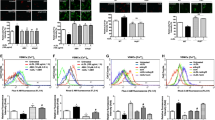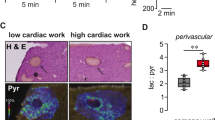Abstract
Nitric oxide (NO) physiologically stimulates the sarco/endoplasmic reticulum calcium (Ca2+) ATPase (SERCA) to decrease intracellular Ca2+ concentration and relax cardiac, skeletal and vascular smooth muscle. Here, we show that NO-derived peroxynitrite (ONOO−) directly increases SERCA activity by S-glutathiolation and that this modification of SERCA is blocked by irreversible oxidation of the relevant cysteine thiols during atherosclerosis. Purified SERCA was S-glutathiolated by ONOO− and the increase in Ca2+-uptake activity of SERCA reconstituted in phospholipid vesicles required the presence of glutathione. Mutation of the SERCA-reactive Cys674 to serine abolished these effects. Because superoxide scavengers decreased S-glutathiolation of SERCA and arterial relaxation by NO, ONOO− is implicated as the intracellular mediator. NO-dependent relaxation as well as S-glutathiolation and activation of SERCA were decreased by atherosclerosis and Cys674 was found to be oxidized to sulfonic acid. Thus, irreversible oxidation of key thiol(s) in disease impairs NO-induced relaxation by preventing reversible S-glutathiolation and activation of SERCA by NO/ONOO−.
This is a preview of subscription content, access via your institution
Access options
Subscribe to this journal
Receive 12 print issues and online access
$209.00 per year
only $17.42 per issue
Buy this article
- Purchase on Springer Link
- Instant access to full article PDF
Prices may be subject to local taxes which are calculated during checkout






Similar content being viewed by others
References
Misquitta, C.M., Mack, D.P. & Grover, A.K. Sarco/endoplasmic reticulum Ca2+ (SERCA)-pumps: link to heart beats and calcium waves. Cell Calcium 25, 277–290 (1999).
Cohen, R.A. et al. Mechanism of nitric oxide-induced vasodilatation. Refilling of intracellular stores by sarcoplasmic reticulum Ca2+ ATPase and inhibition of store-operated Ca2+ influx. Circ. Res. 84, 210–219 (1999).
Adachi, T., Matsui, R., Weisbrod, R.M., Najibi, S. & Cohen, R.A. Reduced sarco/endoplasmic reticulum Ca2+ uptake activity can account for the reduced response to NO, but not sodium nitroprusside, in hypercholesterolemic rabbit aorta. Circulation 104, 1040–1045 (2001).
Trepakova, E.S., Cohen, R.A. & Bolotina, V.M. Nitric oxide inhibits capacitative cation influx in human platelets by promoting sarcoplasmic/endoplasmic reticulum Ca2+-ATPase-dependent refilling of Ca2+ stores. Circ. Res. 84, 201–209 (1999).
Paolocci, N. et al. cGMP-independent inotropic effects of nitric oxide and peroxynitrite donors: potential role for nitrosylation. Am. J. Physiol. Heart Circ. Physiol. 279, H1982–H1988 (2000).
Barouch, L.A. et al. Nitric oxide regulates the heart by spatial confinement of nitric oxide synthase isoforms. Nature 416, 337–339 (2002).
Stamler, J.S., Lamas, S. & Fang, F.C. Nitrosylation:the prototypic redox-based signaling mechanism. Cell 106, 675–683 (2001).
Jaffrey, S.R., Erdjument-Bromage, H., Ferris, C.D., Tempst, P. & Snyder, S.H. Protein S-nitrosylation: a physiological signal for neuronal nitric oxide. Nat. Cell Biol. 3, 193–197 (2001).
Eu, J.P., Sun, J., Xu, L., Stamler, J.S. & Meissner, G. The skeletal muscle calcium release channel: coupled O2 sensor and NO signaling functions. Cell 102, 499–509 (2000).
Sun, J., Xin, C., Eu, J.P., Stamler, J.S. & Meissner, G. Cysteine-3635 is responsible for skeletal muscle ryanodine receptor modulation by NO. Proc. Natl. Acad. Sci. USA 98, 11158–11162 (2001).
Klatt, P. & Lamas, S. Regulation of protein function by S-glutathiolation in response to oxidative and nitrosative stress. Eur. J. Biochem. 267, 4928–4944 (2000).
Viner, R.I., Williams, T.D. & Schöneich, C. Nitric oxide-dependent modification of the sarcoplasmic reticulum Ca-ATPase: localization of cysteine target sites. Free Radic. Biol. Med. 29, 489–496 (2000).
Viner, R.I., Williams, T.D. & Schöneich, C. Peroxynitrite modification of protein thiols: oxidation, nitrosylation, and S-glutathiolation of functionally important cysteine residue(s) in the sarcoplasmic reticulum Ca-ATPase. Biochemistry 38, 12408–12415 (1999).
Viner, R.I., Huhmer, A.F., Bigelow, D.J. & Schöneich, C. The oxidative inactivation of sarcoplasmic reticulum Ca(2+)-ATPase by peroxynitrite. Free Radic. Res. 24, 243–259 (1996).
Pagano, P.J., Griswold, M.C., Najibi, S., Marklund, S.L. & Cohen, R.A. Resistance of endothelium-dependent relaxation elevation of O2− levels in rabbit carotid artery. Am. J. Physiol. Heart Circ. Physiol. 46, H2109–H2114 (1999).
Guzik, T.J., West, N.E., Pillai, R., Taggart, D.P. & Channon, K.M. Nitric oxide modulates superoxide release and peroxynitrite formation in human blood vessels. Hypertension 39, 1088–1094 (2002).
Davidson, C.A., Kaminski, P.M. & Wolin, M.S. NO elicits prolonged relaxation of bovine pulmonary arteries via endogenous peroxynitrite generation. Am. J. Physiol. 273, L437–L444 (1997).
White, C.R. et al. Superoxide and peroxynitrite in atherosclerosis. Proc. Natl. Acad. Sci. USA 91, 1044–1048 (1994).
Beckman, J.S. & Koppenol, W.H. Nitric oxide, superoxide, and peroxynitrite: the good, the bad, and ugly. Am. J. Physiol. 271, C1424–C1437 (1996).
Adachi, T. et al. Antioxidant improves smooth muscle sarco/endoplasmic reticulum Ca(2+)-ATPase function and lowers tyrosine nitration in hypercholesterolemia and improves nitric oxide-induced relaxation. Circ. Res. 90, 1114–1121 (2002).
Flesch, M. et al. Effect of beta-blockers on free radical-induced cardiac contractile dysfunction. Circulation 100, 346–353 (1999).
Xu, K.Y., Zweier, J.L. & Becker, L.C. Hydroxyl radical inhibits sarcoplasmic reticulum Ca2+ -ATPase function by direct attack on the ATP binding site. Circ. Res. 80, 76–81 (1997).
Viner, R.I., Ferrington, D.A., Williams, T.D., Bigelow, D.J. & Schöneich, C. Protein modification during biological aging: selective tyrosine nitration of the SERCA2a isoform of the sarcoplasmic reticulum Ca2+-ATPase in skeletal muscle. Biochem. J. 340 (Pt 3), 657–669 (1999).
Yao, Q., Chen, L.T. & Bigelow, D.J. Affinity purification of the Ca-ATPase from cardiac sarcoplasmic reticulum membranes. Protein Expr. Purif. 13, 191–197 (1998).
Kim, J.R., Yoon, H.W., Kwon, K.S., Lee, S.R. & Rhee, S.G. Identification of proteins containing cysteine residues that are sensitive to oxidation by hydrogen peroxide at neutral pH. Anal. Biochem. 283, 214–221 (2000).
Bishop, J.E., Squier, T.C., Bigelow, D.J. & Inesi, G. (Iodoacetamido)fluorescein labels a pair of proximal cysteines on the Ca2+-ATPase of sarcoplasmic reticulum. Biochemistry 27, 5233–5240 (1988).
Adachi, T. & Cohen, R.A. Decreased aortic glutathione levels may contribute to impaired nitric oxide-induced relaxation in hypercholesterolaemia. Br. J. Pharmacol. 129, 1014–1020 (2000).
Grover, A.K., Kwan, C.Y. & Samson, S.E. Effects of peroxynitrite on sarco/endoplasmic reticulum Ca2+ pump isoforms SERCA2b and SERCA3a. Am. J. Physiol. Cell Physiol. 285, C1537C1543 (2003).
Sharov, V.S. et al. Two-dimensional separation of the membrane protein sarcoplasmic reticulum Ca-ATPase for high-performance liquid chromatography-tandem mass spectrometry analysis of posttranslational protein modifications. Anal. Biochem. 308, 328–335 (2002).
Cohen, R.A. et al. Nitric oxide is the mediator of both endothelium-dependent relaxation and hyperpolarization of the rabbit carotid artery. Proc. Natl. Acad. Sci. USA 94, 4193–4198 (1997).
Plane, F., Wiley, K.E., Jeremy, J.Y., Cohen, R.A. & Garland, C.J. Evidence that different mechanisms underlie smooth muscle relaxation to nitric oxide and nitric oxide donors in the rabbit isolated carotid artery. Br. J. Pharmacol. 123, 1351–1358 (1998).
Radi, R., Beckman, J.S., Bush, K.M. & Freeman, B.A. Peroxynitrite oxidation of sulfhydryls. J. Biol. Chem. 266, 4244–4250 (1991).
Woo, H.A. et al. Reversible oxidation of the active site cysteine of peroxiredoxins to cysteine sulfinic acid. Immunoblot detection with antibodies specific for the hyperoxidized cysteine-containing sequence. J. Biol. Chem. 278, 47361–47364 (2003).
Adachi, T. et al. S-glutathiolation of Ras mediates redox-sensitive signaling by angiotensin II in vascular smooth muscle cells. J. Biol. Chem. 279, 29857–29862 (2004).
Aracena, P., Sanchez, G., Donoso, P., Hamilton, S.L. & Hidalgo, C. S-glutathionylation decreases Mg2+ inhibition and S-nitrosylation enhances Ca2+ activation of RyR1 channels. J. Biol. Chem. 278, 42927–42935 (2003).
Morikawa, K. et al. Pivotal role of Cu,Zn-superoxide dismutase in endothelium-dependent hyperpolarization. J. Clin. Invest. 112, 1871–1879 (2003).
d'Uscio, L.V., Milstien, S., Richardson, D., Smith, L. & Katusic, Z.S. Long-term vitamin C treatment increases vascular tetrahydrobiopterin levels and nitric oxide synthase activity. Circ. Res. 92, 88–95 (2003).
Go, Y.M. et al. Evidence for peroxynitrite as a signaling molecule in flow-dependent activation of c-jun NH2-terminal kinase. Am. J. Physiol. 277, H1647–H1653 (1999).
Ido, Y., Chang, K., Woolsey, T.A. & Williamson, J.R. NADH: sensor of blood flow need in brain, muscle, and other tissues. FASEB J. 15, 1419–1421 (2001).
Barry-Lane, P.A. et al. p47phox is required for atherosclerotic lesion progression in ApoE−/− mice. J. Clin. Invest. 108, 1513–1522 (2001).
Laursen, J.B. et al. Endothelial regulation of vasomotion in apoE-deficient mice: implications for interactions between peroxynitrite and tetrahydrobiopterin. Circulation 103, 1282–1288 (2001).
White, C.R. et al. Circulating plasma xanthine oxidase contributes to vascular dysfunction in hypercholesterolemic rabbits. Proc. Natl. Acad. Sci. USA 93, 8745–8749 (1996).
Fukai, T. et al. Vascular expression of extracellular superoxide dismutase in atherosclerosis. J. Clin. Invest. 101, 2101–2111 (1998).
Abu-Soud, H.M. & Hazen, S.L. Nitric oxide is a physiological substrate for mammalian peroxidases. J. Biol. Chem. 275, 37524–37532 (2000).
Weisbrod, R.M., Griswold, M.C., Du, Y., Bolotina, V.M. & Cohen, R.A. Reduced responsiveness of hypercholesterolemic rabbit aortic smooth muscle cells to nitric oxide. Arterioscler. Thromb. Vasc. Biol. 17, 394–402 (1997).
Miller, F.J., Gutterman, D.D., Rios, C.D., Heistad, D.D. & Davidson, B.L. Superoxide production in vascular smooth muscle contributes to oxidative stress and impaired relaxation in atherosclerosis. Circ. Res. 82, 1298–1305 (1998).
Tribble, D.L. et al. Fatty streak formation in fat-fed mice expressing human copper-zinc superoxide dismutase. Arterioscler. Thromb. Vasc. Biol. 17, 1734–1740 (1997).
Okuda, M. et al. Expression of glutaredoxin in human coronary arteries: its potential role in antioxidant protection against atherosclerosis. Arterioscler. Thromb. Vasc. Biol. 21, 1483–1487 (2001).
Takagi, Y. et al. Expression of thioredoxin is enhanced in atherosclerotic plaques and during neointima formation in rat arteries. Lab. Invest. 78, 957–966 (1998).
Sullivan, D.M., Wehr, N.B., Fergusson, M.M., Levine, R.L. & Finkel, T. Identification of oxidant-sensitive proteins: TNF-α induces protein glutathiolation. Biochemistry 39, 11121–11128 (2000).
Acknowledgements
We appreciate discussions with D. Bigelow and Y. Ido and acknowledge support for mass spectrometry from T. Heibeck and the Boston University Mass Spectrometry Resource Center and from the Mass Spectrometry Laboratory at the University of Kansas. The studies were supported by R01 HL31607-21 (T.A., R.W. and R.A.C.), SCOR HL55993-06 (T.A., R.W. and R.A.C.), the US National Institutes of Health Boston University Cardiovascular Proteomics Center, N01-HV-28178 (T.A. and R.A.C.), AG P01 12993 (V.S. and C.S.), a Grant-in-Aid (T.A.) and a Fellow-to-Faculty grant (D.R.P.) from the American Heart Association, the 21st Century Center-of-Excellence Program for Systems Biology, and the Leading Project for Biosimulation of the Ministry of Education, Sciences and Technology in Japan (T.A.).
Author information
Authors and Affiliations
Corresponding authors
Ethics declarations
Competing interests
The authors declare no competing financial interests.
Supplementary information
Supplementary Fig. 1
Peroxynitrite, but not NO modifies thiols on SERCA. (PDF 82 kb)
Supplementary Fig. 2
Effects of peroxynitrite on SERCA activity in rabbit aortic homogenates. (PDF 58 kb)
Supplementary Fig. 3
S-glutathiolation of SERCA by bradykinin in pig carotid arteries. (PDF 59 kb)
Supplementary Fig. 4
S-glutathiolation and activation of SERCA by NO in cultured smooth muscle cells from rabbit aorta. (PDF 60 kb)
Supplementary Table 1
MALDI-TOF mass spectrometry analysis of Cys-modifications on SERCA purified from rabbit aortic homogenates treated with GSH (0.5 mM) and ONOO− (100 μm) (PDF 29 kb)
Supplementary Table 2
MALDI-TOF mass spectrometry analysis of Cys-modifications (GSS-Cys and SNO-Cys) on SERCA purified from pig carotid arteries treated with bradykinin (BK) (PDF 28 kb)
Supplementary Table 3
MALDI-TOF and ESI/LC mass spectrometry analysis of Cys-modifications (GSS-Cys and SNO-Cys) on SERCA purified from endothelium-denuded rabbit aorta treated with NO gas solution (PDF 34 kb)
Supplementary Table 4
MALDI-TOF mass spectrometry analysis of Cys-sulfonylation (RSO3H) on SERCA purified from atherosclerotic rabbit aorta (PDF 28 kb)
Rights and permissions
About this article
Cite this article
Adachi, T., Weisbrod, R., Pimentel, D. et al. S-Glutathiolation by peroxynitrite activates SERCA during arterial relaxation by nitric oxide. Nat Med 10, 1200–1207 (2004). https://doi.org/10.1038/nm1119
Received:
Accepted:
Published:
Issue Date:
DOI: https://doi.org/10.1038/nm1119
This article is cited by
-
Evaluation of the salivary level of glutathione reductase, catalase and free thiol in patients with oral lichen planus
BMC Oral Health (2023)
-
Cysteine facilitates the lignocellulolytic response of Trichoderma guizhouense NJAU4742 by indirectly up-regulating membrane sugar transporters
Biotechnology for Biofuels and Bioproducts (2023)
-
SERCA2 phosphorylation at serine 663 is a key regulator of Ca2+ homeostasis in heart diseases
Nature Communications (2023)
-
The SarcoEndoplasmic Reticulum Calcium ATPase (SERCA) pump: a potential target for intervention in aging and skeletal muscle pathologies
Skeletal Muscle (2021)
-
Towards precision medicine in heart failure
Nature Reviews Cardiology (2021)



